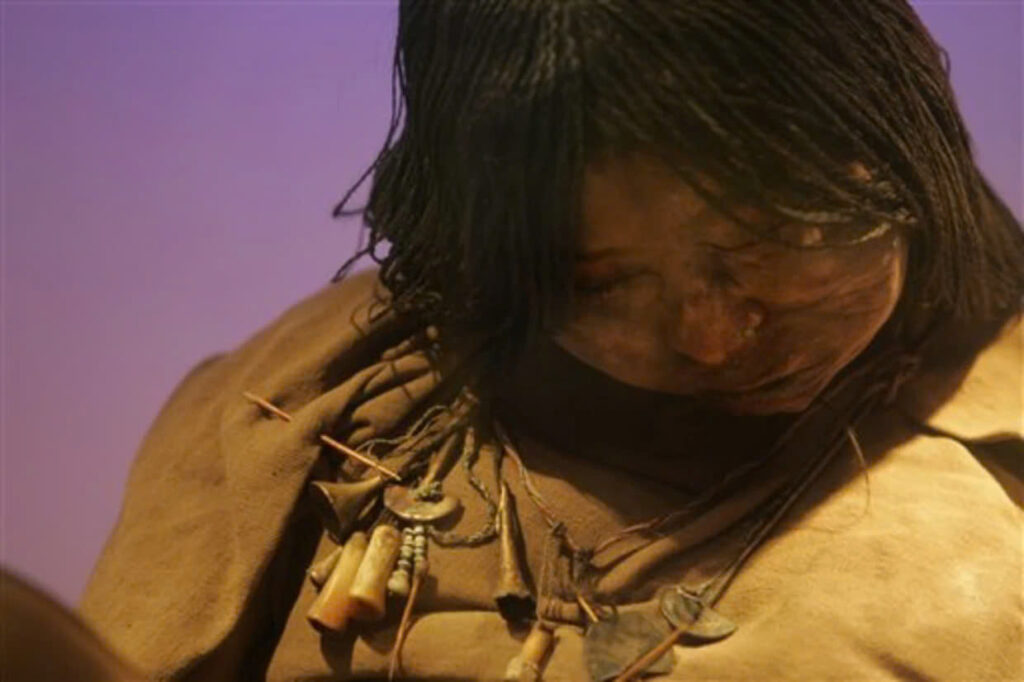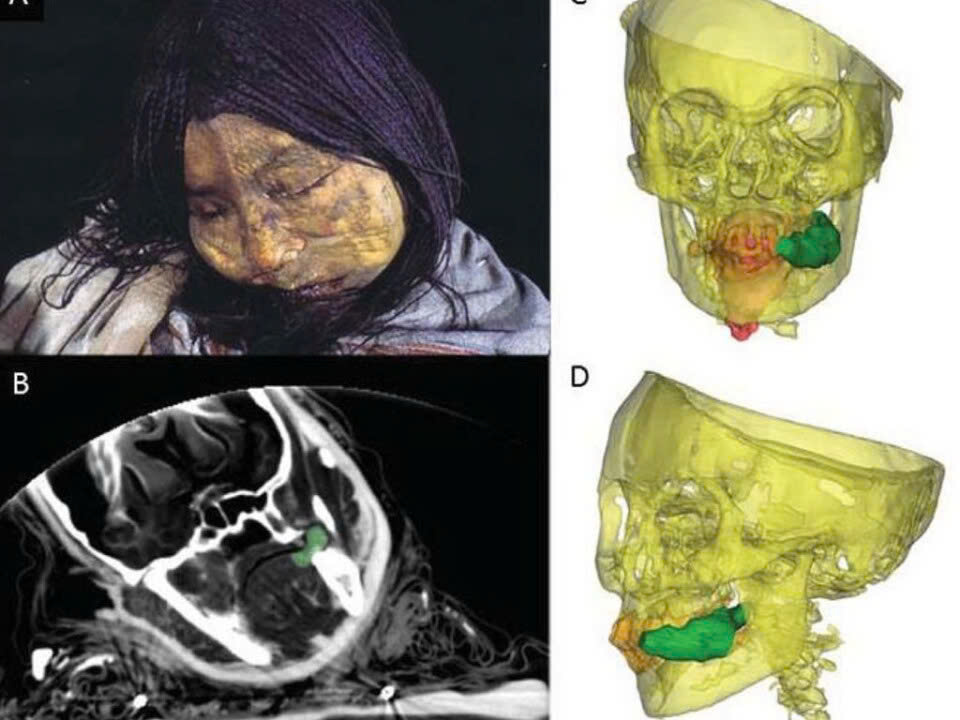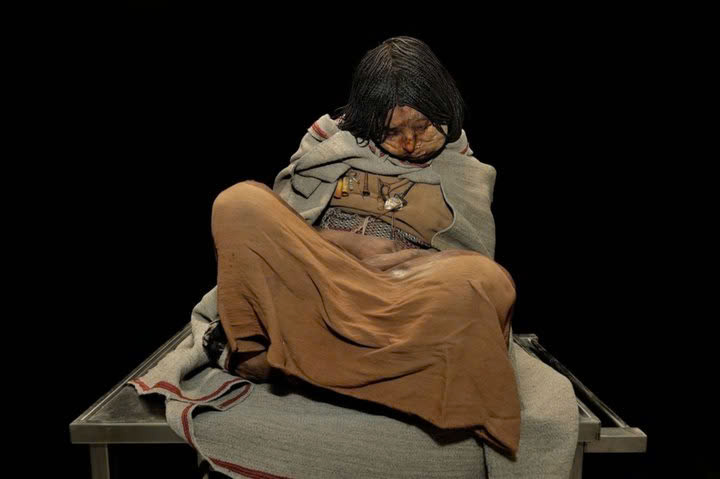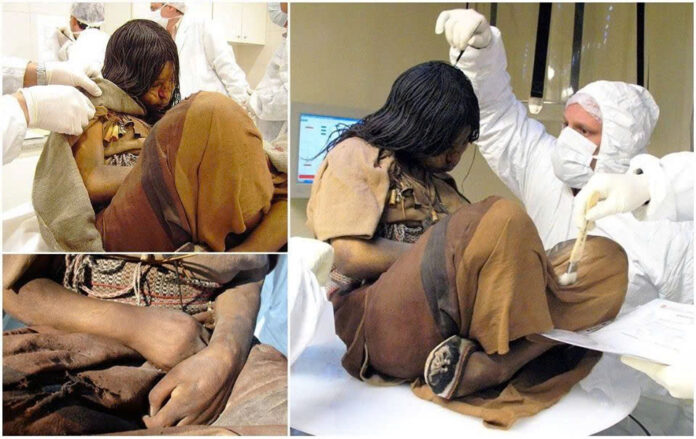High in the frigid peaks of the Andes Mountains, where the air is thin and time seems to stand still, lies one of archaeology’s most remarkable discoveries. In 1999, near the summit of Llullaillaco Volcano straddling the Argentina-Chile border, researchers uncovered what would become known as one of the world’s best-preserved mummies – the Llullaillaco Maiden.
The Discovery That Stunned the World

At an astounding altitude of 6,700 meters (22,100 feet), archaeologists found not just one, but three perfectly preserved Inca children. Among them, the Maiden stood out as an exceptional testament to the past. The children were victims of the capacocha ritual, an ancient Inca practice of human sacrifice performed to appease the gods or gain their favor during times of crisis.
A Perfect Preservation Through Natural Elements

The story of the Maiden’s preservation is as remarkable as the discovery itself. The extreme altitude of her final resting place created perfect conditions for natural mummification. In the cold, dry, oxygen-poor environment, her body remained virtually unchanged for five centuries. Her facial features, hair, and even the intricate patterns of her ceremonial garments tell a story frozen in time.
The Final Moments
Scientific analysis revealed a touching detail about her final moments – the Maiden was given coca leaves and alcohol before her death, suggesting the Inca priests ensured her transition was peaceful and free from suffering.
A Life of Sacred Purpose

The Maiden’s story goes beyond her death. In her final year of life, her diet underwent a dramatic transformation, shifting to elite foods like maize and meat – a change that marked her elevated status as a chosen one. The capacocha ritual was no ordinary ceremony; it was reserved for the most sacred of occasions, such as natural disasters or the death of an emperor.
A Treasury of Artifacts
Surrounding the Maiden were carefully placed offerings – miniature statues crafted with exceptional skill, finely woven textiles, and ceremonial vessels. Each item speaks to the incredible artistry of Inca craftsmen and the profound spiritual significance of the sacrifice.
Preserving History with Dignity
Today, the Maiden and her companions rest in the Museum of High Altitude Archaeology (MAAM) in Salta, Argentina. Their discovery has opened new windows into understanding Inca civilization, from their religious practices to their mastery of high-altitude ceremonies.

The museum takes great care to present these remarkable finds with the respect they deserve, honoring both their scientific significance and their deep cultural meaning. The Maiden of Llullaillaco stands as a powerful reminder of the Inca people’s unwavering devotion to their gods and their remarkable ability to merge spiritual practice with the natural world

